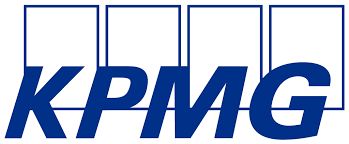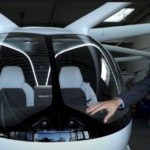The second edition of the virtual Farnborough Connect kicked off yesterday with collaboration and cooperation among the main buzzwords of the sessions.
The event brought together leaders from industry, academia and government. Insights into the key issues affecting the future of aerospace and defence were shared and particpants were able to participate in online networking between sessions. Day one focused on defence and security, in the air on sea – and even in space.
Discussions started with a display of collaboration between US and UK F-35 aircraft from the flagship of the Royal Navy and the centre piece of the Carrier Strike Group of the UK, HMS Queen Elizabeth. Commander of the Carrier Strike Group, Commodore Steve Moorhouse, talking from the ship in its way to the Indo Pacific, explained the depth of the cooperative strategy that has been made possible, now the carrier is operational.
“Strengthening ties with like minded partners”
“In the coming months we’ll see a programme of visits and exercises designed to strengthen our ties with partners new and old, across a range of shared interests, defence and security, but also trade and investment, cyber security, climate change, and many other areas of mutual cooperation. Much of this rests on the convening power of Carrier Strike. HMS Queen Elizabeth and her escorts are able to draw together like-minded navies and air forces of all size shapes and types, along with the military and political leadership.”
ADS Group president and CEO of Meggitt, Tony Wood explained how the UK industry had been directly involved in the development of the MoD’s industrial strategy which now give the sector confidence to invest in advanced capabilities.
A “more nuanced approach to competition”
Wood said: “The more nuanced approach to competition means we hope to see the UK supply chain being prioritised in procurement decisions, and an increase in the domestic contribution to programmes and we’re optimistic about the greater opportunities that this could create. And we’ll be monitoring closely how the industrial strategy is implemented.”
Industry and the MoD have a clear eye on the future – in a session called Future Battle Space, the next generation of defence came under the microscope. David Rawlinson of BAE Air explained that the detail will be in the data when it came to building the new systems which will defend us against future threats.
Data will drive change and adaption
He said: “We need that data right at the front end now, on the concepting phase of future systems as well, right through the development phase and so as we move to digital engineering, synthetic tests and so on, that will drive changes. It will blur the boundaries between task and evaluation, through to training through into operations. It’s going to drive need for more countries to have intelligence, surveillance, reconnaissance capabilities to generate data, it’s going to drive an enormous need to be able to support the data science that then takes that data, refines it, exploits it and turns it into useful intelligence and then future data sources to support the next set of platforms.”
A panel with key MoD, government and industry experts discussed how learning from the private sector could enable a more sustainable defence forces and mitigate significant costs.
Sam Healy, from QinetiQ said the industry had to put its “hearts and minds” together to work towards greater sustainability. That resonated with Air Marshall Andrew Turner who said the issue was “non-negotiable” but added that it wasn’t a case of reinventing the wheel to make improvements.
Simple steps could reduce carbon emissions
Indeed he came up with a novel idea to reduce carbon close to a runway – replacing grass on runways with moss. He explained: “Moss is really interesting, because that carbon sequestration capability of moss is something like 100 times that of planting a tree. Now, given that co2 is emitted close to the ground on runways, if we were to realign airfields with moss, not grass, not only would it save me money and grass cutting and bird control, but but you know, we’d end up sinking the carbon we burn close to the ground directly into the soil it is really fascinating how we can, how we might better take good ideas from all across the industry in an enterprise to our advantage.”
The UK’s Secretary of State for Business, Energy and Industrial strategy, Kwasi Kwarteng had also stressed the importance of sustainability on the whole sector – and the benefits it could bring to the industry.
Kwarteng: government and industry “now work together very closely”
He said: “Another positive development has been how it government and industry now work together very closely across the breadth of the UK economy. The jet zero council brings together a wide group of aerospace, aviation, fuel and academic interests to boost the development of new green aerospace technologies and sustainable aviation fuels. The aerospace growth partnership brings us together to tackle barriers to growth to boost exports and to grow high value jobs.”
FIA Connect continues today, with more focus on sustainability and the whole future of the airline world. Highlights include a session with the chief technology officers from Airbus, Boeing, Rolls-Royce, Safran, GE and Raytheon. “Reaching Net Zero – Setting the Aerospace Sustainability Agenda” A CTO Roundtable will take place at 1.30–2.30pm BST.


